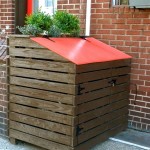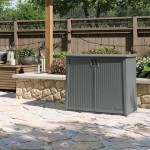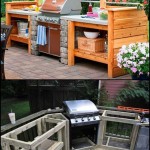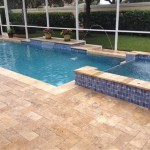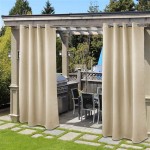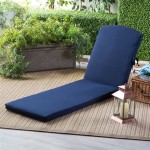```html
Artificial Trees For Outdoor Pots: Aesthetics and Practicality
The incorporation of greenery into outdoor spaces is a common practice to enhance aesthetic appeal and create a more inviting environment. However, maintaining live plants, particularly trees in pots, requires significant time, effort, and resources. Artificial trees offer a practical alternative, providing the visual benefits of natural trees without the associated upkeep. This article explores the advantages, considerations, and options available when considering artificial trees for outdoor pots.
Durability and Weather Resistance
One of the primary benefits of artificial trees designed for outdoor use is their enhanced durability and weather resistance. Unlike indoor artificial plants, outdoor models are specifically engineered to withstand environmental stressors such as prolonged exposure to sunlight, rain, wind, and temperature fluctuations. Manufacturers typically utilize UV-resistant materials in the production process, mitigating color fading and degradation caused by ultraviolet radiation. This is a critical factor, as prolonged sun exposure can significantly shorten the lifespan of non-UV-protected artificial foliage.
Furthermore, the construction of outdoor artificial trees often incorporates more robust materials, such as reinforced stems and branches, to withstand wind and physical impact. The base structures are also typically weighted or designed for secure anchoring to prevent tipping or displacement during inclement weather. The selection of materials that resist water damage, mold, and mildew is also essential for maintaining the longevity and aesthetic appeal of the tree.
The choice of materials directly influences the overall cost and lifespan of the artificial tree. Lower-quality materials may be initially more affordable but will degrade more quickly, leading to frequent replacements. Investing in higher-quality, weather-resistant materials offers long-term cost savings and ensures that the artificial tree maintains its appearance for an extended period.
Maintenance and Cost-Effectiveness
The significant reduction in maintenance requirements is a major advantage of using artificial trees in outdoor pots. Unlike live trees, artificial trees do not require watering, pruning, fertilizing, or pest control. This eliminates the need for ongoing expenditure of time and resources associated with these tasks. For individuals with busy schedules or limited gardening expertise, artificial trees provide an easy and hassle-free way to add greenery to their outdoor spaces.
The long-term cost-effectiveness of artificial trees is also a significant consideration. While the initial investment may be higher than purchasing a live tree, the absence of ongoing maintenance costs offsets this initial expense over time. The need to replace dead or diseased live trees is also eliminated, further contributing to long-term cost savings. Furthermore, the absence of watering requirements translates to reduced water consumption, which can be particularly beneficial in regions with water restrictions or high water costs.
The minimal maintenance requirements also make artificial trees an attractive option for commercial properties, such as restaurants, hotels, and office buildings. These businesses often have limited resources dedicated to landscaping maintenance, and artificial trees offer a cost-effective solution for maintaining an appealing outdoor environment. The consistent appearance of artificial trees also ensures a professional and well-maintained image for the business.
Aesthetic Versatility and Design Options
Artificial trees offer a wide range of aesthetic versatility and design options, allowing individuals to select trees that perfectly complement their outdoor spaces. A variety of tree species, sizes, and styles are available, enabling the creation of diverse and visually appealing landscapes. Whether the goal is to create a tropical oasis, a Mediterranean garden, or a more formal and structured environment, artificial trees can be selected to achieve the desired aesthetic.
The ability to customize the appearance of artificial trees is another advantage. The foliage can be shaped and arranged to create a natural and realistic look. Decorative elements, such as lights, ribbons, or ornaments, can also be added to enhance the visual appeal of the tree. This level of customization allows individuals to personalize their outdoor spaces and create a unique and inviting atmosphere.
Furthermore, artificial trees can be strategically placed in areas where live trees would struggle to thrive. For example, in shaded areas or on balconies with limited sunlight, artificial trees can provide greenery without the need for supplemental lighting or other interventions. This allows for the creation of aesthetically pleasing outdoor spaces in locations where traditional landscaping options are limited.
The selection of an appropriate pot for the artificial tree is also crucial for achieving the desired aesthetic. The pot should be appropriately sized for the tree and should complement the overall design style of the outdoor space. A wide range of pot materials, colors, and styles are available, allowing for further customization and personalization.
Material Selection and Realism
The realism of artificial trees is largely dependent on the quality of materials used in their construction. High-quality materials, such as realistic-looking foliage and textured bark, contribute to a more natural and believable appearance. The use of advanced manufacturing techniques also allows for the creation of artificial trees that closely mimic the appearance of live trees.
Polyethylene (PE) and polyurethane (PU) are commonly used materials for artificial foliage. PE foliage tends to be more durable and weather-resistant, while PU foliage offers a more realistic texture and appearance. Some manufacturers use a combination of both materials to achieve a balance between durability and realism. The use of color variations and subtle details in the foliage also contributes to a more natural look.
The selection of materials for the trunk and branches also influences the overall realism of the artificial tree. Some manufacturers use real wood for the trunk and branches, while others use synthetic materials that are molded to resemble wood. The use of textured surfaces and realistic bark patterns can enhance the authenticity of the tree.
The level of detail and craftsmanship that goes into the construction of an artificial tree directly impacts its price. Higher-quality artificial trees, with more realistic features and durable materials, tend to be more expensive than lower-quality models. However, the increased realism and longevity of higher-quality trees often make them a worthwhile investment.
Installation and Placement Considerations
Proper installation and placement are crucial for ensuring the stability and aesthetic appeal of artificial trees in outdoor pots. The base of the tree should be securely anchored to the pot to prevent tipping or displacement during windy conditions. This can be achieved by using weights, such as rocks or sandbags, or by securing the base to the pot with screws or bolts.
The placement of the artificial tree should also be carefully considered. The tree should be positioned in a location that complements the overall design of the outdoor space and enhances its visual appeal. Consideration should be given to the size and shape of the tree, as well as the surrounding landscape. The tree should not obstruct walkways or views, and it should be positioned in a way that allows for easy access and maintenance.
The pot itself should be placed on a stable and level surface. Uneven surfaces can cause the tree to lean or tip over. The pot should also be protected from extreme weather conditions, such as frost or excessive heat. This can be achieved by placing the pot in a sheltered location or by using a pot that is designed to withstand extreme temperatures.
Regularly checking the stability of the tree and the condition of the pot is also important. Any signs of damage or instability should be addressed promptly to prevent accidents or further damage. By following these installation and placement considerations, individuals can ensure that their artificial trees remain stable, aesthetically pleasing, and long-lasting.
Cleaning and Maintenance Procedures
While artificial trees require significantly less maintenance than live trees, occasional cleaning is necessary to maintain their appearance and prevent the build-up of dust and debris. The frequency of cleaning will depend on the environmental conditions and the level of exposure to dust and dirt. In general, artificial trees should be cleaned every few months or as needed.
The cleaning process typically involves using a soft cloth or brush to remove dust and debris from the foliage. A mild soap and water solution can be used to remove more stubborn dirt or stains. It is important to avoid using harsh chemicals or abrasive cleaners, as these can damage the foliage and reduce its lifespan.
For larger artificial trees, a garden hose can be used to rinse off the foliage. However, it is important to avoid using high-pressure water, as this can damage the delicate foliage. After rinsing, the tree should be allowed to air dry completely before being returned to its original location.
Regularly inspecting the tree for signs of damage, such as tears or cracks in the foliage, is also important. Any damaged foliage should be repaired or replaced promptly to prevent further deterioration. By following these cleaning and maintenance procedures, individuals can ensure that their artificial trees remain clean, attractive, and long-lasting.
Environmental Considerations
While artificial trees offer several practical and aesthetic benefits, it is important to consider the environmental implications of their production and disposal. The manufacturing process of artificial trees typically involves the use of synthetic materials, such as plastics, which are derived from fossil fuels. The production of these materials can contribute to greenhouse gas emissions and other environmental problems.
Furthermore, the disposal of artificial trees can pose environmental challenges. Many artificial trees are not recyclable, and they may end up in landfills, where they can take hundreds of years to decompose. However, some manufacturers are beginning to use recycled materials in the production of artificial trees, which can help to reduce their environmental impact.
Individuals can also minimize the environmental impact of artificial trees by selecting durable and long-lasting models that will not need to be replaced frequently. Proper maintenance and care can also extend the lifespan of artificial trees, reducing the need for replacements. Furthermore, individuals can explore options for recycling or repurposing old artificial trees, rather than simply discarding them.
By considering the environmental implications of artificial trees and taking steps to minimize their impact, individuals can enjoy the benefits of these products while also protecting the environment.
```
Artificial Palm Tree Green Potted Plant Indoor Outdoor Topiary Houseplant Garden Ebay

Homcom 35 5 Ball Boxwood Topiary Tree Artificial Plant In Pot For Indoor Outdoor Home Decor Aosom Com

Ly Natural 4 5 Ft High Indoor Outdoor Cycas Artificial Tree In Orange Planter 5790

3 Ft 36 In Tall Faux Cedar Trees Set Of 2 Artificial Topiary Tree Pot Potted Fake Cypress Plant For Porch Decor Hdxsqpho 34hug3rv The Home

How To Pot An Artificial Plant Using Planters Balsam Hill

Poetree 2 Pack 3ft Topiary Artificial Faux Cedar Tree Plant Potted Indoor Or Outdoor Uv Protection Plastic

3 Boxwood Triple Ball Topiary Artificial Tree Indoor Outdoor

36 Uv Resistant Outdoor Artificial Sago Cycas Palm Tree W Pot Green

High Quality Artificial Cycas Palm Tree With Pot Free Shipping

Faux Cedar Tree Uv Outdoor Greenery 87
See Also

